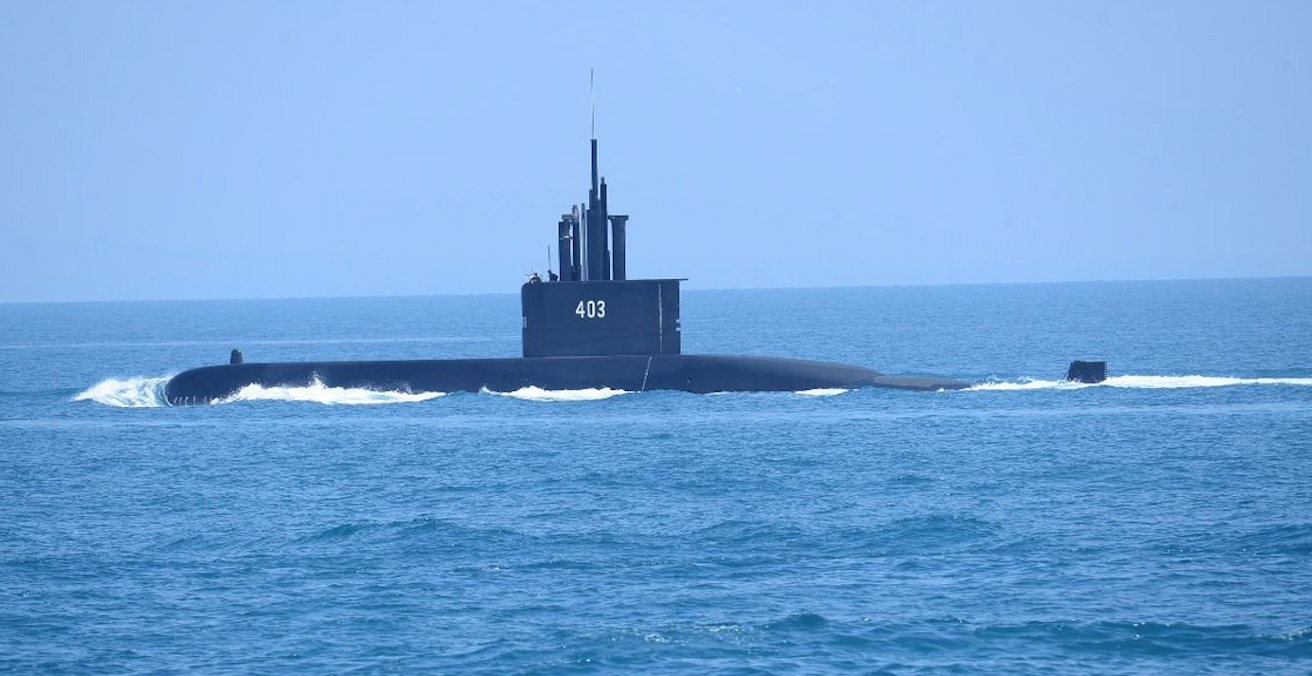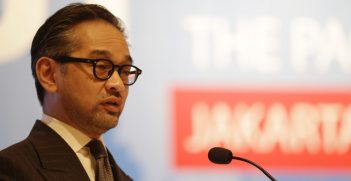What Indonesia’s Submarine Purchase Tells Us About Its Strategic Priorities

Jakarta’s choice to upgrade its defence capabilities with a billion-dollar submarine project reveals how they view their greatest naval strategic challenges.
The deal to acquire three more submarines from South Korea with the value of US $1.02b — about an eighth of the Indonesian defence budget — indicates the Southeast Asian state’s strategic intentions.
Jakarta’s military modernisation efforts are aimed at acquiring a Minimum Essential Force (MEF) by 2024, which includes upgrading a range of maritime capabilities. The choice to invest in submarines, over other options, reveals that Indonesia views sea denial with elevated importance.
Given the world’s largest archipelagic state faces numerous kinds of security challenges during peacetime — such as illegal fishing, smuggling and natural disasters — dual-purposed platforms, such as surface vessels and maritime patrol aircraft, would be natural priorities for defence investment.
In contrast, submarines are exclusively designed for conventional warfare, and the type that is necessary to support a sea denial strategy: which would be used to disrupt, if not repel, an adversary’s naval operations. Submarines are unsuitable for most peacetime missions, with the rare exception of rare cases of anti-piracy. They also cannot be the main source of sea control, due to their lack of escort capabilities. Thus, Jakarta’s selection of submarines shows a clear step towards developing sea denial capabilities.
With several strategically important straits connecting the Indian and Pacific Oceans within its borders, Indonesia is unlikely to avoid competition among maritime powers — primarily between China and the US. The possession of certain naval capabilities is essential for Jakarta to protect its sovereignty and to serve as a bargaining chip in realpolitik.
Jakarta’s concentration on sea denial likely reflects that such a strategy maximises the strategic asymmetrical leverage Indonesia can have over adversaries for the same budget, especially given Indonesia’s industrial capacities. If Indonesia used the same amount of budget to build three or more frigates, or to procure even more maritime patrol aircraft, the strategic advantage would be less than that gained by three submarines.
This is not to say that defence investment would be entirely funnelled toward developing sea denial capabilities, as at the same time Indonesia still requires the capacity for various peacetime missions.
Indonesia has paid considerable attention to building up its sea denial capability. Aside from submarines, Jakarta has developed two types of indigenous fast attack craft (FAC), the KCR-40 and KCR-60, equipped with licence-built Chinese C-705 anti-ship missiles. This is in parallel with acquiring air-to-surface missiles with anti-ship potential, such as Russian Kh-31P, which would be carried by the Air Force’s Su-30MK2 fighters.
However, the strategic advantage from these would be lower than that from submarines, both for deployment and countermeasure. Indonesia’s large territory requires forward deployment for FACs and aircraft, as well as insufficient infrastructure in terms of naval and air bases, may restrict such operations. While submarines are also not free from the physical limitations of the time necessary to travel large distances, their inherent stealth would make adversaries less certain when and where attacks may occur, compared with more certain platforms. In this way, submarines provide greater deterrence than other means of sea denial.
Regarding countermeasures, the sophisticated shipboard air defence systems of modern militaries, which allow for detection and interception ranges of more than a hundred kilometres, can form layered defence which are more likely to neutralise single shots or a few volleys of anti-ship missiles. Although various types of anti-submarine warfare (ASW) tactics and equipment are also available, the volatile underwater environment, especially in the archipelagic waters, often impede the detection of submarines due to the differing levels of temperature and saltiness. As such, submarines have better attack opportunities and give target less time to respond. In short, submarines present Jakarta with an asymmetrical advantage to counter a superior navy.
Indonesia’s submarine project is also about establishing its indigenous base. Indonesia manages a range of defence industries, and its naval domain is probably advancing the fastest in this respect. It’s naval industry builds sophisticated vessels such as the Makassar-class landing platform docks (LPD) and Martadinata-class frigates. Submarines, as the next major step for shipbuilding, would certainly require some government-level support. In Indonesia’s previous purchase of submarines, the Indonesian company, PT PAL, assembled the third submarine, and thus some Indonesian specialists and skilled labours were trained during the project. With the current order, Indonesia will develop increased talent, accumulate more experience and master more knowledge with regards to submarine shipbuilding, which would be important not only to Indonesia’s defence but also its industrial capacity. Without a further project, Jakarta is unlikely to retain the professionals with expertise in building submarines, not to mention strengthening this expertise. Economically, building submarines locally contributes to GDP and employment, which is crucial in Indonesia’s vivid democracy. Finally, Indonesia’s success in exporting LPD and locomotives to users of developing countries, such as the Philippines, selling submarines would also be a reasonable mid-term goal for Jakarta.
Next to the shipbuilding, improving infrastructure and facilities that support underwater operations would be an indicator for Indonesia’s submarine capability, since only one or two bases could be vulnerable to external attack. If an external power came to threaten the archipelagic country, it would have standoff capability to strike the Indonesian submarine bases, leaving the diesel-electric submarines with limited or no operational sustainability due to a lack of logistical support. This suggests additional facilities for sustaining submarine operation could be more valuable for deterrence than procuring further submarines.
Advanced submarine technologies, such as Air Independence Propulsion (AIP) or sub-launched missiles, are unlikely incorporated for the coming submarines, especially considering the budget of the current submarine purchase deal does not exceed than that of the previous deal. Nevertheless, technological upgrades should not be excluded during the building stage. Since more than half of the budget for submarines is based on loans, financial arrangement for AIP or other equipment may still be an option for Indonesian defence planners.
Overall, this latest submarine deal reveals Jakarta’s strategic priorities — to develop the capability for a sea denial strategy — as well as its industrial ambition to increase its technical expertise in shipbuilding.
Shang-su Wu is a research fellow of the Regional Security Architecture Programme at the S. Rajaratnam School of International Studies (RSIS), Nanyang Technological University in Singapore.
This article is published under a Creative Commons Licence and may be republished with attribution.





